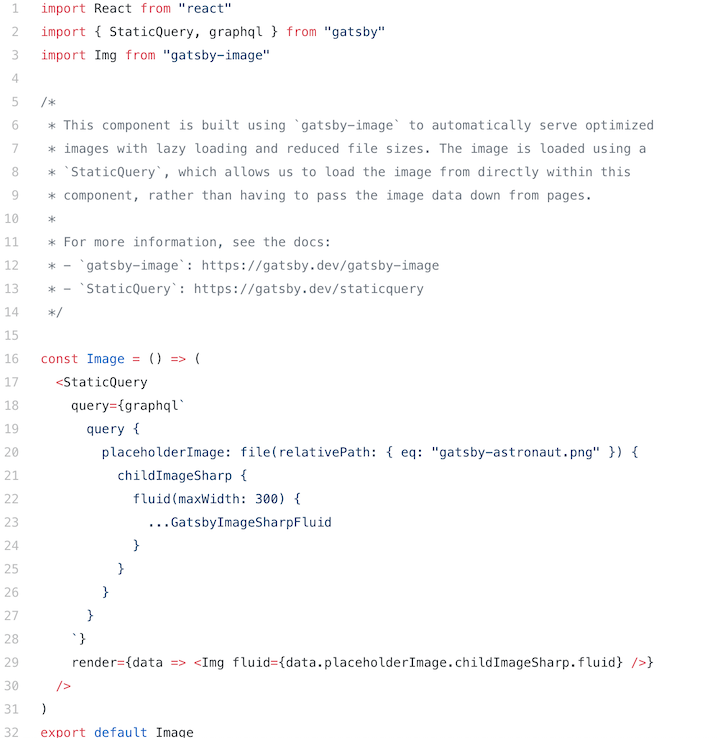
Enamel pin polaroid gluten -free helvetica single -origin coffee. Lorem ipsum dolor amet helvetica cardigan readymade wayfarers cold -pressed poutine. md file looks like, especially in the frontmatter: - title : My first blog postĭate : 2019 - 01 - 21 author : Danilo Woznicaįeatured : true image. Inside it there will be an index.md and every other static file that you’re going to use in the blog post.Īfter that, your project should look something like this. So for each new blog post, you need to create a new folder with the title slugified (or with any other name as long as it’s unique).
#FLUID IMAGE GATSBY FREE#
Even though that is the way I prefer to work, feel free to choose what is better for you. Then I usually create another folder named /content/blog which will be the base folder to write every blog post. To organize the data, I normally create a folder in the root project called /content where I put all the files related to the content of my website. So, let’s try to solve the following problems:Ĭategory and tag pages (with pagination) My goal here is to show you how I implemented a complete blog “from scratch” only using gatsby-node.js and its pageContext API. I suppose you know enough about Gatsby, so I won’t go into detail on how basic things like query/StaticQuey, layout, and pages work. My favorite, and yours probably too, is Gatsby: “a free and open-source framework based on React that helps developers build blazing-fast websites and apps.” 🛠 What will we build? The React community has a couple of tools/frameworks that can generate a static website. That’s why the community started creating different ways to build static site generators You get a complete build done quickly without complications, hosted cheaply or even for free. Today, static site generators are one of the most popular ways to build websites. Hopefully that snippet helps if you're trying to do something similar.👉 Check out the demo and source.

Based on that, I implemented the following component, which works great and includes all the fun functionality that gatsby-image offers: import Img from 'gatsby-image' const Image = ( props ) => ( /> ) I came across this post by someone who had been doing some fancier image querying with Gatsby - they had the foresight to query all the images upfront by using the allFile query, and filter them down with props later. I didn't want to put a query on every page with images though, so I started investigating other options. This behavior is documented by Gatsby, and that documentation notes that the alternative is to use a page query.


Included fragments should be referenced as `.MyModule_foo`. If you try to do this, you'll see an error like this on build: Error: BabelPluginRemoveGraphQL: String interpolations are not allowed in graphql fragments. Unfortunately this doesn't actually work - StaticQuery is called "Static" because it's compiled and doesn't support string interpolation in its template literal. Simple enough - I figured I could make it customizable using props: const Image = ( props ) => ( } /> ) The default Image component generated by Gatsby uses StaticQuery: import Img from 'gatsby-image' const Image = () => ( } /> ) Surprisingly, this is hard to do in Gatsby. As part of this, I wanted a simple component to display a static image, something like this:
#FLUID IMAGE GATSBY GENERATOR#
I use Gatsby as a static site generator to build this blog using React.


 0 kommentar(er)
0 kommentar(er)
